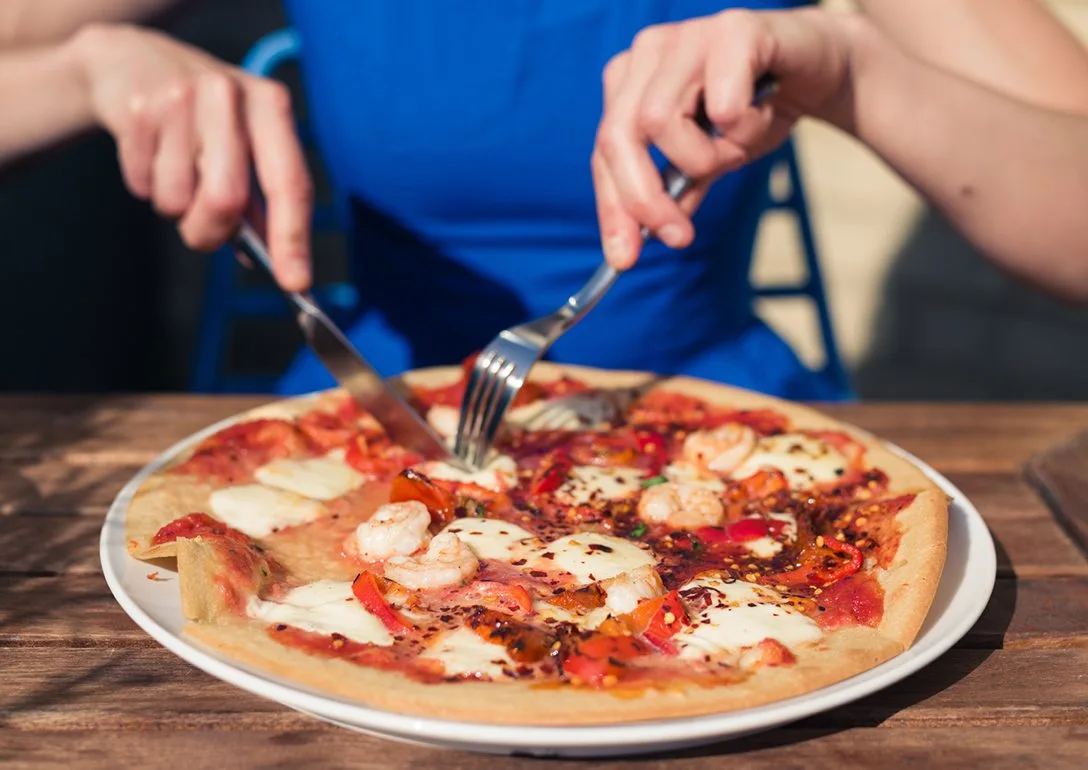As today’s consumers get busier and busier, they have less time to eat out at restaurants, but they still want to get a good meal. Restaurants and diners are moving away from the idea that great food must come with a huge price tag or lots of formality.
The restaurant industry has answered this craving for evolving consumer preferences by embracing an increasingly popular concept: fast casual dining. As we delve deeper into this article, we’ll explore the unique features, benefits, and implications of this growing trend in the restaurant space.
What is a fast casual restaurant?
A fast casual restaurant is a type of dining establishment that combines elements from both fast food and fine dining. It offers the convenience and efficiency of fast food, with customers typically ordering at a counter and refilling their own drinks. However, unlike traditional fast food joints, fast casual restaurants emphasize high-quality, fresh ingredients and diverse culinary options. The food is often customizable, giving a more elevated dining experience. These establishments also tend to have a more relaxed atmosphere and prices compared to the formality of fine dining restaurants.
Defining fine casual dining
Fast casual restaurants, as Danny Meyer likes to call “fine-casual dining,” have been popping up around the country for years now. As Meyer says, this new kind of restaurant marries together “the ethos and taste level of fine dining with the fast food experience.” His two fine casual restaurants, Shake Shack and the pizzeria restaurant Martina, are famous examples of the growing trend.
The term “fine casual” has caused some controversy – but not for the reasons you may expect. Restaurateurs are delighted at this new type of concept, but critics say the phrase is confusing. Industry experts are arguing over semantics, saying that since “casual” refers to the quality of the food (and some availability of alcohol), while “fast” refers to the speed of the diners’ experience, these restaurants should actually be calling themselves “fast fine.”
From a guest perspective, fine casual restaurants offer the fast-casual experience of ordering at a counter and refilling your own drinks, with the high-quality food one might expect from a full-service restaurant. High-quality ingredients make for a higher cost to the customer – but for most guests, this is a major selling point.
Market research firm Mintel reports that 69% of consumers want to see more restaurants with a casual atmosphere but high-quality food.
Fine casual dining concept examples
For restaurant operators, fine casual dining means a major shift in operations. These establishments require a smaller front of house staff than full-service restaurants, which lets businesses save on labor costs. Some of these restaurants, like Charles Bililies’ Souvla, also depend heavily on takeout and delivery. Now that 5-star table service is not an essential part of a great meal, diners are more willing to eat an expensive meal at home.
These exciting restaurants such as Mendocino Farms and honeygrow, are increasingly popular. In Denver and San Francisco – the two cities where fine casual is most popular – restaurateurs are busily revamping their menu offerings and streamlining operations to keep up with demand as they learn more about this business model.
Key characteristics of fast casual dining
Interior Design
Fast casual dining establishments are marked by their inviting and comfortable atmosphere. They’re designed to accommodate both quick meals and longer, relaxed dining experiences. The interior often features modern, clean design elements, and open kitchens are common to showcase food preparation and emphasize freshness.
Menus
Fast casual menus focus on high-quality, fresh ingredients. They often allow for a high degree of customization, letting customers choose from a variety of options to create their ideal meal. The food is typically more sophisticated and diverse than traditional fast food, drawing from a variety of global cuisines and dietary preferences. Limited alcohol is often available in this dining environment.
Technology
Technology plays a significant role in fast casual dining. Many establishments utilize digital ordering systems, self-service kiosks, and line-busting or tableside technology to streamline the ordering process and enhance customer experience. These ordering systems allow for quicker service, order accuracy, and convenience, catering to today’s tech-savvy consumers.
Staffing Needs
Fast casual restaurants usually require fewer staff than traditional sit-down restaurants due to customer self-service elements, such as ordering at a counter or self-serve drink stations. However, the staff they do employ are often more highly trained, particularly in the kitchen, to ensure the high-quality food preparation that the fast casual model promises.
Price and Value
Prices at fast casual establishments are typically higher than those at fast food restaurants but lower than fine dining establishments.
What exactly distinguishes fast casual dining from fast food and fine dining?
Fast casual dining occupies a unique space between fast food and fine dining, offering quick service like fast food restaurants while providing higher-quality food like fine dining establishments. While fast food typically focuses on speed and affordability, fast casual emphasizes fresh ingredients, customizable options, and a more relaxed dining experience. Fine dining, on the other hand, offers high-quality food and service in a formal setting, often at a higher price point. Fast casual strikes a balance between these extremes, offering quality food with the convenience of a fast-paced dining experience.
How do fine casual restaurants differentiate themselves in terms of menu offerings compared to traditional fast food or fine dining establishments?
Unlike traditional fast food joints that primarily serve standardized, mass-produced meals, fine casual establishments prioritize freshness, flavor, and variety. While some fast food chains may offer limited choices and processed ingredients, fine casual dining embraces creativity and culinary innovation, appealing to customers seeking elevated dining experiences without the formality of fine dining establishments.
What are the challenges and opportunities for fine casual dining establishments in terms of market penetration and consumer acceptance?
While the concept has gained popularity in cities like Denver and San Francisco, where consumers seek high-quality food in a casual atmosphere, broader acceptance may require overcoming misconceptions and educating the public about the value proposition of fine casual dining. Challenges such as competition from established fast food chains and the need to maintain consistency in food quality and service standards with staffing issues could hinder growth. However, opportunities lie in meeting consumer demand for fresh, flavorful meals that offer a balance between convenience and quality, as evidenced by market research indicating a desire for more casual dining options with high-quality food. A recent report shows the global fast casual restaurant market is projected to reach $337.8 billion by 2032, registering a CAGR of 10.4% from 2023 to 2032.
Elevate your fast casual restaurant service with CAKE
The fast casual dining space offers a unique blend of quality and convenience that is increasingly resonating with today’s consumers. The integration of technology, like CAKE’s fast casual POS system, can enhance the dining experience, streamline operations, and support your restaurant’s success. As the market continues to grow, establishments that can effectively balance speed, quality, and a relaxed atmosphere will stand out in the competitive landscape of fast and fine casual dining.







